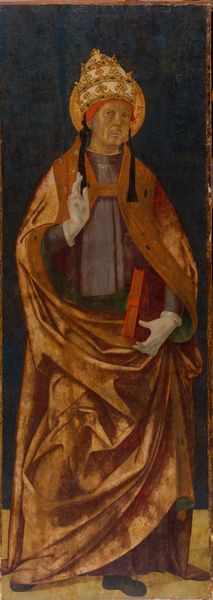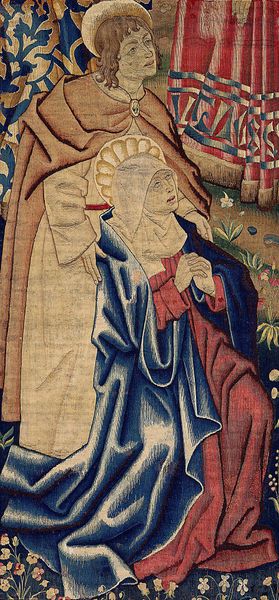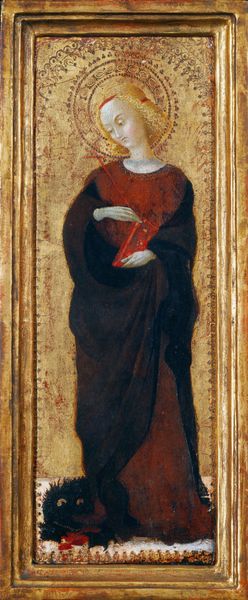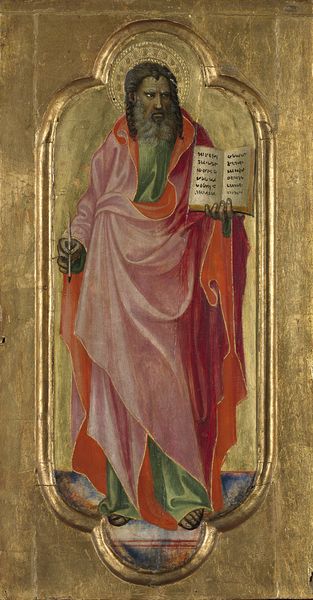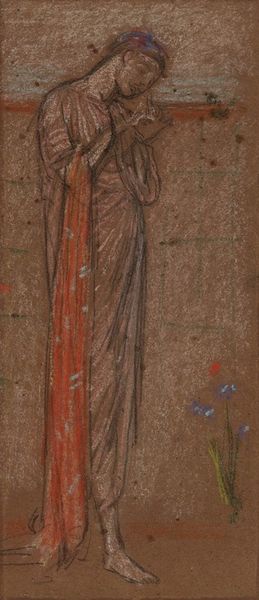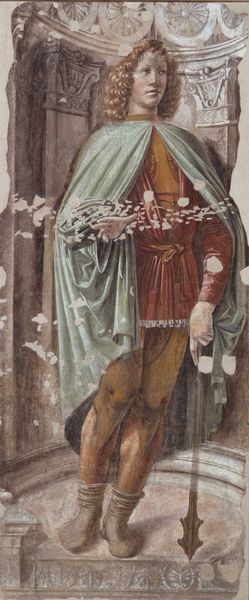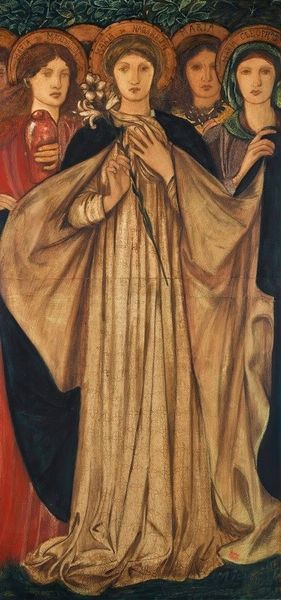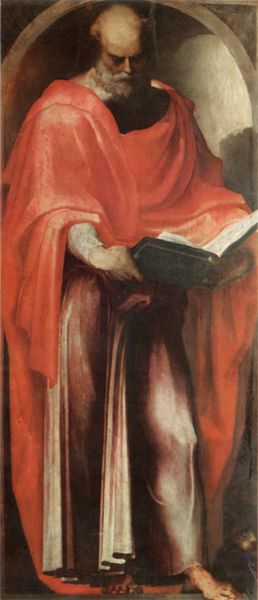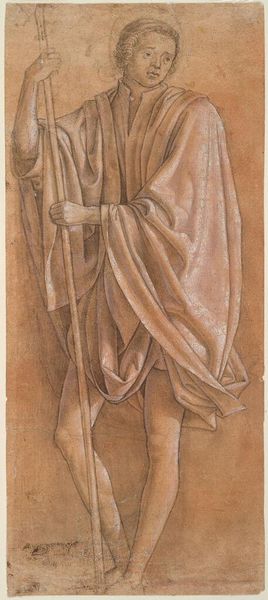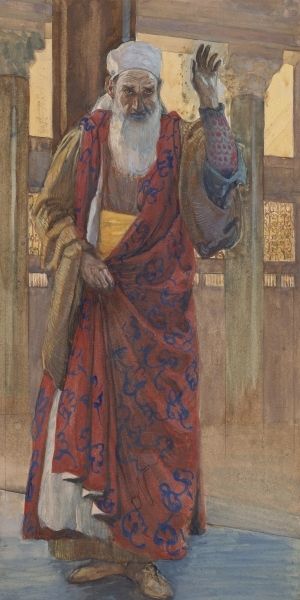
tempera, painting
#
gouache
#
narrative-art
#
tempera
#
painting
#
gothic
#
figuration
#
oil painting
#
history-painting
#
watercolor
Dimensions: 58 cm (height) x 17.8 cm (width) (Netto)
Curator: This painting, currently residing here at the SMK, depicts St. Christopher with the Child. It’s rendered with tempera, possibly gouache too, on panel. While the artist remains anonymous, we know it dates back to somewhere between 1400 and 1430, placing it firmly in the Gothic period. Editor: My initial feeling? Stark and solemn. There’s an unadorned quality to Christopher's stance, that, alongside the slight upward tilt of his face, is almost tragic. His robes have some red but also lots of what appears to be fading. You know, it reminds me a bit of that feeling you get watching a play that hasn't been perfectly rehearsed, that beautiful thing you can almost grasp, like reaching for a cloud! Curator: That sense of incompleteness, I think, speaks to its historical context. Representations of St. Christopher were hugely popular during the medieval period, as people invoked his protection, particularly against sudden death. Consider it in terms of social need, collective anxiety about health and safety amid plague outbreaks, the Hundred Years' War... Visual representation as communal defense, wouldn’t you say? Editor: Absolutely, but look closer, what about the almost disproportionate, or is it delicate, way his toes clutch at that darkening moss or stone? There’s this incredible tension between labor and…divinity I don't know that he’s really keen on? It reminds me a little of Caravaggio; dramatic and fraught and very, very real. And yet the child, the figure perched upon his shoulders is not in conflict, it glows almost with a surety he can barely bring himself to imagine? Curator: Yes! The contrast underscores the core narrative. Christopher, originally a Canaanite giant, was said to have carried the Christ Child across a river. With each step, the child grew heavier, revealing himself to be carrying the weight of the world. Here, then, the painting is commenting on burdens, but also the transformative potential within seemingly ordinary acts. It begs us to examine how power dynamics can reshape, even redeem, individual identity and moral consciousness, as told through religious teaching of burden-bearing. Editor: But, don't you feel this rendering complicates it slightly? The Child sits atop Christopher as a...burden, yes, a godly weight. But, maybe his presence is more hopeful, it also feels strangely leveling and deeply private too. Their secret; revealed, partially at least to those that view and feel. I’m struck with, dare I say it… a strange warmth of possibility? Curator: Well, on that surprisingly optimistic note, let's encourage our listeners to take a closer look and decide for themselves. The beauty of art is how it transcends prescribed meaning, creating personal resonance through encounters. Editor: I couldn't agree more. It reminds me to just keep trekking, keep ferrying whatever… burden comes along. Who knows, maybe what weighs me down will lift me up, eventually?
Comments
No comments
Be the first to comment and join the conversation on the ultimate creative platform.
